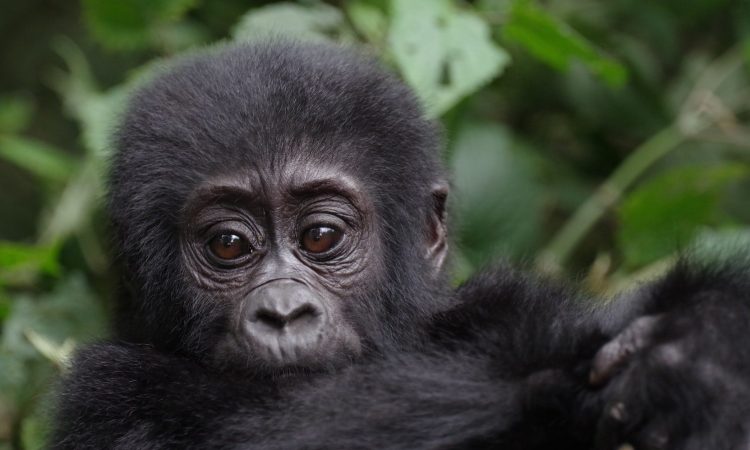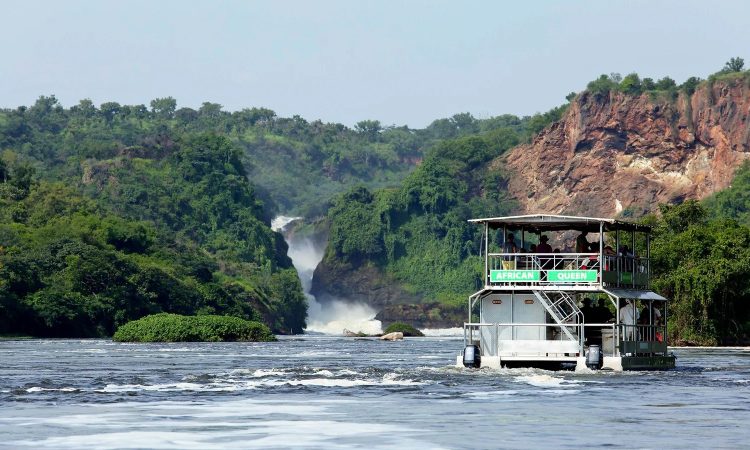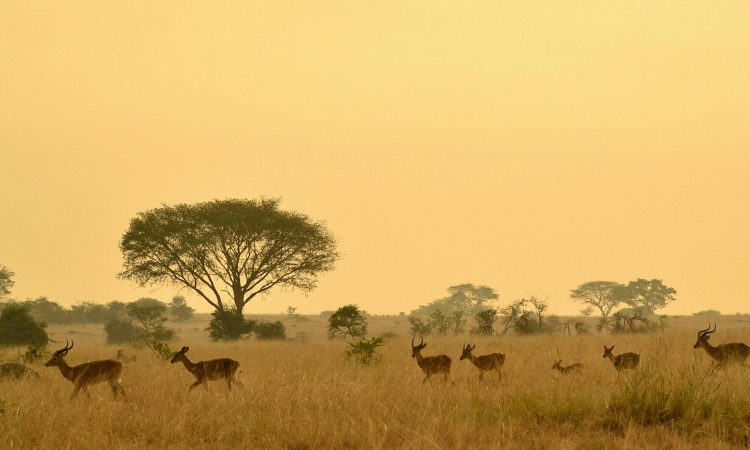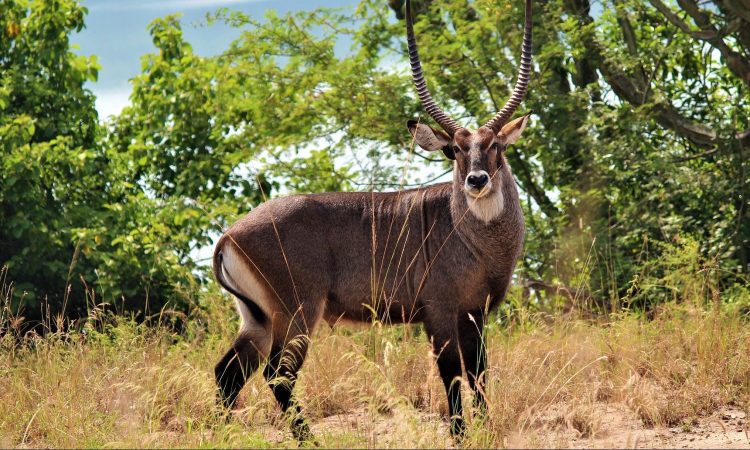Planning for gorilla trekking in Africa? The mountain gorilla is one of the most well-known primates in the world. This type of gorilla is only found in a few places: Volcanoes National Park in Rwanda, Virunga National Park in Congo, and both Bwindi Impenetrable National Park and Mgahinga Gorilla National Park in Uganda.
Mountain gorillas have thick fur on their bodies, which helps them survive in cold weather. They live in high areas, between 2,200 and 4,300 meters above sea level. These gorillas mostly live on the ground and usually move on all fours, but they can also walk on two legs for short distances.
They walk by using their knuckles, with their arms supporting most of their body weight.
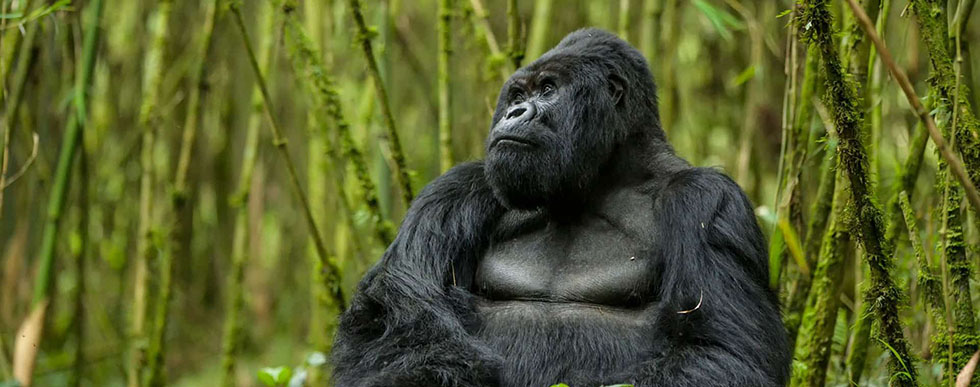
Uganda gorilla experiences take place in Bwindi Impenetrable National Park and Mgahinga Gorilla National Park.
In Rwanda, gorilla trekking happens in Volcanoes National Park, while in Congo, it takes place in Virunga National Park and Kahuzi-Biega National Park.
Adult male gorillas are called silverbacks because they grow grey hair on their backs as they get older.
They can climb trees to pick fruits if the branches are strong enough to hold their weight.
Their arms are longer than their legs, just like chimpanzees.
Mountain Gorilla Scientific Name
The scientific name for mountain gorillas is Gorilla beringei beringei. Mountain gorillas are believed to have come from apes and old monkey ancestors that lived in Arabia and Africa about 24 to 34 million years ago. They were first called Troglodytes in 1847, and later named gorillas in 1852.
Male gorillas weigh about 195 kg and are around 168 cm tall. Female gorillas weigh about 100 kg and are about 140 cm tall. The tallest gorilla ever recorded was 1.9 meters tall, weighed 219 kg, and had an arm span of 2.7 meters.
The heaviest silverback ever recorded was shot in Ambam, Cameroon, and weighed 267 kg.
Mountain Gorilla Behavior
Gorillas have many behaviors that help them survive. They sleep in nests made from plants. They build these nests every evening. Gorillas are active from 6 am to 6 pm, and they eat leaves, roots, fruits, bark, stems, and flowers. This means they are mostly plant eaters.
A female gorilla can eat up to 18 kg of plants each day, while a male can eat up to 34 kg.
Gorilla groups are led by a silverback who decides what the group does each day. When young male gorillas grow up, they leave their family and either join other lone males or start their own group to attract females.
Female gorillas also leave their group to join another one or a lone silverback to make a new family.
The leading silverback will protect his group from danger, even if it means risking his life. This includes attacks from leopards, poachers, or other gorillas. If the silverback dies, another silverback may take over, or a lone male may join the group. If a new male takes over, he may kill all the young males to remove threats to his leadership.
Gorillas are strong and can be aggressive when they feel danger or face a challenge. Outside of danger, gorillas are calm and peaceful. If there is conflict, they may hit the ground, tear up plants, beat their chests, pretend to eat, hoot, kick, or run sideways.
For unknown reasons, gorillas are said to be afraid of caterpillars and chameleons.
Mountain Gorilla Trekking & Habituation
According to Wikipedia, mountain gorillas live in groups of 5 to 30 members, led by one silverback.
Female gorillas give birth after being pregnant for 8 to 9 months.
Just like human babies, gorilla babies weigh about 4 pounds and can ride on their mothers’ backs from 4 months up to 3 years old.
Females start giving birth around 10 years of age and may have 2 to 6 babies in their lifetime.
Mountain gorillas were once listed as endangered by the IUCN. They were at risk due to habitat loss, poaching, bush-fires, and wars.
But after their numbers passed 1,000, they were removed from the endangered list. This progress is thanks to tourists who bought gorilla permits to visit them.
You can trek mountain gorillas in Mgahinga and Bwindi in Uganda, Virunga in Congo, and Volcanoes in Rwanda.
Virunga, Mgahinga, and Volcanoes all belong to the Virunga Conservation Area.
Tourists are guided by park rangers to find the gorillas. Once the gorillas are found, visitors are given one hour to observe them.
For those who choose gorilla habituation, the visit lasts four hours instead of one.
Gorilla habituation is when visitors join researchers to help wild gorillas get used to humans. This is done before the gorillas are opened for trekking.
Accessing Mountain Gorillas
Volcanoes National Park in Rwanda is just a 2-hour drive from Kigali International Airport.
To reach Virunga National Park in Congo, the easiest way is to fly into Rwanda and drive 4 to 5 hours to the park.
Bwindi and Mgahinga in Uganda can be reached from Kampala by road in about 8 to 9 hours.
Another option is to fly to Rwanda, then drive about 4 hours to reach these parks in Uganda.
You can also fly from Entebbe to Kisoro or Kihihi airstrips and then take a short drive to Bwindi or Mgahinga.
Book Your Tour Now
If you want to add more days or visit more places, please contact us through our main contact page using the button below.



